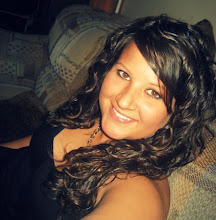 TOYBOX
TOYBOXFor our major project this term, we are creating a magazine. We have to write all the articles, produce all the ads and promote it for a Magazine Tradeshow in April.
Greg, Melyssa, Emelia and I are the TOYBOX group. We were one of the fortunate groups that got their idea approved by the panel of CreComm teachers right off the bat.
Here are some preliminary steps to creating your own magazine:
1. Idea
Coming up with an idea for a magazine is the hardest part. A lot of groups had trouble with it. You have to think of what hasn't been done before and what part of the magazine market is left untouched. You don't want the topic to be too narrow - you want to have enough room to think of new material for issues to come. But then again, you don't want to be too vague, or else you won't have a distinct target audience.
2. Material
You need to make sure you'll have enough material to produce more than one issue. Your subject should be something that is evolving and will be around for a while.
We were able to think of so many ideas for material for the TOYBOX magazine. So far, we have plans to write articles on the evolution of the toy car, environmentally-friendly toys, spotlight on a toy collector and an investigation on what the 'age groups' on toys really mean. We will also explore what toys are able to stand the test of time (really, how old is Barbie?). There are so many things we could do!
3. Advertising
Who would want to advertise in your magazine? Do those companies usually advertise in magazines, do they have the money?
We made a 'dream list' of who we would want to advertise in TOYBOX. Make sure it's realistic.
4. Get going!
This is the stage we are at now. It's good to have a plan so you know what you want to do. Right now, we're starting the production stage. Who will you interview for the articles you brainstormed? What will your design look like? Play around with some fonts and colours. Hopefully, it'll all come together.
Producing a magazine is a definite test of CreComm because it combines all the elements of communications. Layout is important to attract readership. Journalism is crucial to encourage repeat customers. PR is essential to promote your finished product and get it distributed. And of course, advertising gives you the money.


1 comments:
This is an excellent idea.
Post a Comment